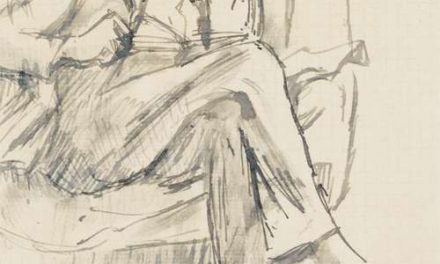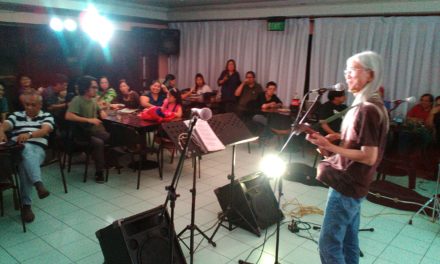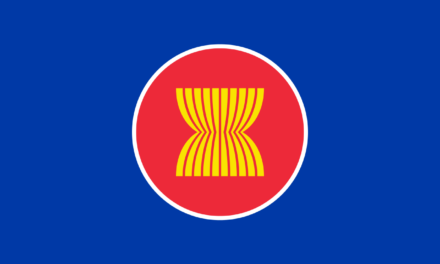The gunpowder found on her face indicated that she had been shot at point-blank range.
The KPD is just one of many left-leaning groups now under shadowy assault.
UNORKA (Ugnayan ng mga Nagsasariling Lokal na Organisasyon sa Kanayunan, or National Coordination of Autonomous Local Rural People’s Organizations), a farmers’ group that is part of the “Fight of the Masses” coalition, is now pushing for a “transitional revolutionary government” to replace Arroyo. So far, no fewer than 13 of UNORKA’s leaders have been killed. The group’s national secretary general was shot dead on April 24.
Keeping track of the onslaught has not been easy. Human-rights organizations as a rule only count those cases that are reported to them, and each maintains separate lists. According to a running tally by the Philippine Daily Inquirer newspaper, the latest killings bring the total number of activists slain since Arroyo seized power in 2001 to 224. The human-rights group Karapatan estimates that figure much higher, at 601. Nearly all of the cases remain unresolved. An additional 140 activists are considered “disappeared” and remain missing. [2] And the number is growing by the week.
TROUBLE IN THE PROVINCES
Fallen activist Abanador-Gandia’s province falls under the command of Major-General Jovito Palparan, the most controversial military official in the Philippines. Widely dubbed “the executioner” by his critics, Palparan stands accused of perpetrating a rash of killings and disappearances of leftist activists during his previous postings in Samar and Mindoro provinces.
But increasingly, his is not a lone voice in the wilderness. His military superiors have a quiet way of expressing their agreement with Palaparan’s tactics: through promotion. Palparan is elevating through the military’s ranks and was recently bestowed the Distinguished Service Star medal for his “eminently meritorious and valuable service”.
Yet Palparan’s fighting mood reflects a growing edginess in the military.
“The enemy that we confronted more than three decades ago is the same enemy that we are confronting today, only more scheming and obviously much more dangerous,” wrote Lieutenant-General Romeo Dominguez in his recent book Trinity of War: The Grand Design of the CPP/NPA/NDF (Communist Party of the Philippines/New People’s Army/National Democratic Front).
Published by the Armed Forces of the Philippines (AFP), the book has become one of the military’s “know your enemy” guidebooks, as indicated in a recent military Powerpoint presentation produced by the AFP top brass and circulated among soldiers. The volume discusses how the leftist movement has evolved since the late 1940s, how the Communist Party of the Philippines (CPP) took over its mantle beginning in the 1960s, and how it has morphed and splintered along ideological and tactical lines since the 1980s.
Complete with tables and flow charts, the book includes a comprehensive list of what it calls the “communist terrorists’ legal sectoral front organizations” – down to the provincial level – including the names and top leaders of those groups that have broken away from the CPP’s mainstream or that have only emerged in recent years.
This threat has not been lost on the military and right-wing politicians, who have grown increasingly alarmed by the left’s resurgence. The strength of the NPA was estimated at about 25,000 fighters during the martial-law period in the 1970s, dwindled to about 8,000 in the 1990s, and is reportedly on the upswing again. In recent months, the NPA has launched a series of military offensives across the country. Apart from the NPA, a number of smaller left-wing armed groups operate in remote provincial areas.
The Philippines’ right has also been spooked by the left’s recent success in democratic elections. When the formal institutions of democracy were restored after the 1986 “people power” uprising, the left was split between those who still saw the armed struggle as primary and those who wanted to contest power through electoral processes. The CPP initially boycotted the general elections that paved the way for Corazon Aquino’s presidency.
In the last elections, left-leaning candidates won 11 of the 24 party-list seats filled. Though this proportion represents little more than 5% of the total national vote, the left’s visibility in public debates has been disproportionately high compared with their actual number of parliamentary seats. On the streets, where in the Philippines political battles are frequently waged, only the broad left has been able consistently to mobilize people, albeit on a limited scale.
Military official Palparan has promised to “completely clear his area of responsibility of rebels before he retires in September this year”. [7] It is a vow endorsed by the country’s top civilian defense official, Avelino Cruz, who has also said that the “communist insurgency” can be defeated in “six to 10 years”. [8]
Intensifying its long-running involvement in the Philippines’ counter-insurgency campaign, the United States jointly designed the Philippine Defense Reform Program with the Philippine military and is funding half of its $370 million budget. Washington has designated the CPP/NPA and the Alex Boncayao Brigade, a group that broke away from the NPA, as “foreign terrorist organizations”.
But while the military has always considered the armed leftist groups to be a major military threat, and offensives and counter-offensives were launched way before Arroyo took office, there has recently been one significant shift in the mindset of key military officials: an increasing refusal to distinguish between armed and unarmed leftists, between those who are in the underground guerrilla movement and those who are in the open legal struggle.
The boundary, at least in the eyes of certain military and civilian officials, simply does not exist.
This attitude is best summed up by Palparan’s stock reply whenever he’s reminded that the activists who are killed are unarmed and participate in legal mass organizations: “They’re legal but they’re doing illegal activities.” [9] The decision to decriminalize the communists in 1994 was a bad idea, says Palparan, adding that he would be “happy” to have it restored. The Trinity of War stresses – in bold typeface – that, while the CPP still considers parliamentary struggles secondary to the armed struggle, both struggles are “complementary, interrelated, and interactive”.
According to National Security Adviser Norberto Gonzales, “What we are fighting today is no longer the classic guerrilla warfare. They have infiltrated and entered our democratic process.” He has railed against how the left’s elected parliamentarians are taking advantage of their office to advance the revolution. He has constantly complained about how Bayan Muna members “moonlight” as NPA fighters and how they are, to paraphrase Palparan, straddling both sides of what the government defines to be legal and illegal activities.
‘WE HATE COMMUNISTS’
It’s obviously a charge that those who have been killed will not have the opportunity to contest. Most of the victims belonged to legal leftist or left-leaning organizations enumerated in the AFP’s list of alleged “front”
organizations. As a recent Amnesty International report puts it, “Increased killing in particular provinces were reportedly linked to the public labeling of leftist groups as NPA front organizations by local AFP commanders.”
Other activists belong to organizations that are locked in bitter land disputes with powerful landlords who, aided by the state’s tacit consent or lack of political will, have historically used thugs to eliminate peasants pushing for land reform. With their lands now subject to expropriation, these landlords, said TFM campaign coordinator Factor, have been acting like “mad, rabid dogs unleashed”.
Most of the killings are concentrated in areas of increased militarization and intensified counter-insurgency operations. In Palparan’s Central Luzon, more than 50 leftists have been killed, or nearly a quarter of the total 224 killings compiled by the Philippine Daily Inquirer. In that region, the military has embedded itself in 10-man detachments in various villages, conducting door-to-door interrogations and nightly patrols.
They have even taken to organizing anti-communist workshops and mobilizing protest rallies in support of the military. Participants of these rallies say they were told to make placards saying, “We hate communists.” Negros, where a number of the killings are concentrated, is another province where the military has launched what the region’s military chief, Lieutenant-General Samuel Bagasin has described as “decisive operations”.
The victims are apparently not chosen at random. Almost all of those that have been executed are known leaders or organizers who actively worked on the ground and recruited new members into their organizations. The operations are in most cases surgical and well targeted. And while provincial and municipal-level organizers were being picked off, national leaders are also being persecuted.
Facing rebellion charges, at least one congressman from Anakpawis remains in detention, while five others camped out in Congress for two months to elude arrest. Justice Secretary Raul Gonzales has told them to “go back to the mountains where they belong”, [10] an allusion to where the CPP has historically pitched its base camps.
Activist Factor suspects that the calculated elimination of the upper echelons of his organization is an attempt to terrorize members and scare off potential recruits in the hope of slowly debilitating the movement. One local columnist has called it a “kill one, scare 100” tactic. [11] That the activists are not being killed en masse, but rather at a slow-motion rate of one every other day, seems calculated to maximize the chilling effect while also minimizing public outrage.
Observers point out that this manner of killing is reminiscent of the period in the late 1980s when, at the height of the “total war” waged by the Aquino government against the left, masked motorcycle-riding men also shot and killed activists across the country. According to the human-rights group Task Force Detainees of the Philippines, up to 585 were killed during that orgy of extrajudicial violence.
PROUD HUMAN RIGHTS RECORD
The government publicly views the widespread killing of activists as just a sad coincidence. There is no set pattern and the killings are unrelated, officials contend. Accusations against state security officials are routinely shrugged off.
State officials have repeatedly insisted that there’s no state-sanctioned crackdown on activists. “We have nothing to hide about, and we are proud of our human-rights record,” press secretary Ignacio Bunye recently said.
Earlier, Arroyo called accusations of human-rights violations “an insult” to the military.
But those on the left no longer aligned with the CPP and who have been openly critical of its anti-infiltration campaign have come out to dismiss this charge as both opportunistic and ludicrous. Robert Francis Garcia, secretary general of the Peace Advocates for Truth, Healing and Justice, an organization of survivors, relatives and friends of victims of the CPP’s past internal purge, believes that the government is “capitalizing on the issue to hammer down the CPP/NPA”.
Garcia points out that the manner by which the CPP’s purge was carried out then bears little resemblance to how activists are being killed nowadays.
Then, Garcia recalls, suspected infiltrators were arrested, detained and interrogated by party agents – they were not executed summarily in public as is happening now.
Even an officially constituted police task force has recently identified soldiers and paramilitary forces as suspects in at least some of the killings. [13] The normally timid Commission on Human Rights (CHR), an independent constitutional body, has stated that the “pattern of complaints that come to us show members of the armed forces and the PNP [Philippine National Police] as suspects”. Assuming that the government is not behind the many unresolved killings, the commission points out that it still has a duty to solve and prevent them.
Even if one assumes that a portion of the killings could be explained away as the result of personal grudges or of turf wars among different armed leftist factions, the vast majority of the cases paint an alarming pattern.
A POOR RECORD
Arroyo’s administration is turning out to be the most repressive regime in the Philippines since Ferdinand Marcos’ corrupt authoritarian rule.
According to the Task Force Detainees of the Philippines, about 3,400 people were killed and more than 700 disappeared during Marcos’ 14-year dictatorship.
combined 11-year tenure in terms of the number of people executed, tortured, or illegally detained.
This is not to say that all was well before Arroyo came to power. Previous administrations also tallied their fair share of rights violations. But as Max de Mesa, the Philippine Alliance of Human Rights Advocates chair and longtime human-rights activist, points out, the total number of cases of rights violations under Arroyo should not be compared as separate from those of her predecessors.
Despite being unarmed and secured against a wall, 26 detainees were shot dead. Human-rights groups called the incident a “massacre” and the CHR has since endorsed their recommendation to file murder charges against the officials.
Freedom of the press has never come at a higher price for at least 42 journalists who have been killed since Arroyo took power – or about half of the estimated 79 killed since 1986. This record prompted the US-based Committee to Protect Journalists to rank the Philippines in 2005 as the “most murderous” country for journalists in the world next to Iraq. Some have contested that label, saying the country is in a league of its own; Iraq, after all, is a war zone.
While local bosses and criminal elements, and not state agents, are likely to be behind many of the journalists’ killings, the government’s tepid response shows its inability – or unwillingness – to protect the press.
While human-rights violations have steadily mounted, the situation has taken a sharp turn for the worse after Arroyo, facing widespread calls for her ouster from across the political spectrum, began to use more brazenly coercive measures to retain her grip on power. For instance, she has banned public demonstrations and authorized the use of force to disperse them. She has gagged public officials from testifying in congressional hearings.
Last week, five leaders of the Union of the Masses for Democracy and Justice (UMDJ), a group identified with imprisoned former president Joseph Estrada, were abducted in broad daylight – not in the countryside but in the capital Manila – and were missing for about two days. Pressed whether the military had arrested the UMDJ leaders, executive secretary Eduardo Ermita denied the allegations and emphatically repeated the government’s standard line, “They are automatically pointing at the administration as the culprit, which is unfair.”
Such cases illustrate that the state is conducting commando-style operations against activists and casts doubts on its claims that it has not been involved in unresolved killings and disappearances.
THINKING ABOUT A REVOLUTION
In many ways, the recent wave of killings is a tragic reprise of previous episodes in Philippine history. In 1946, leftist legislators were also expelled from Congress and driven to the mountains. Death squads stalked the Philippines’ countryside in the early 1950s and late 1980s. Newspaper offices were routinely padlocked by the government during periods of martial law. State-sponsored disappearances gave birth to a generation of orphans and widows.
If the recent killing spree signifies anything, it’s that the growing coercion and the abandonment of democratic rights portend the fraying of the post-1986 political order, when the dictator Marcos was unceremoniously thrown from power and democracy restored. What will replace those democratic hopes, more than at any time in recent years, is a point of bitter political contention.
But as the intensifying militarization and repression signify, another camp has moved to break the stalemate. Those who seek to roll back democracy and push the country toward a more authoritarian, albeit nominally democratic, system are again in the ascendant and clearly on the offensive.
But as the Philippines’ massive marginalized population has increasingly employed these institutions to challenge the status quo, sections of the ruling class and military appear to have come to the conclusion that democracy is a double-edged sword. Low-intensity democracy is once again giving way to low-intensity warfare in the Philippines, while being “underground” has taken on its old meaning.
(Herbert Docena is with Focus on the Global South, a research and advocacy
organization.)
1. Philippine Daily Inquirer, May 15, 2006









